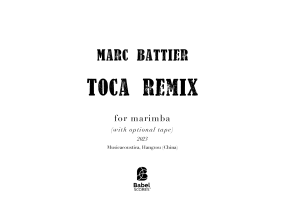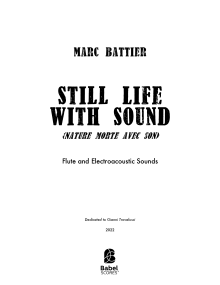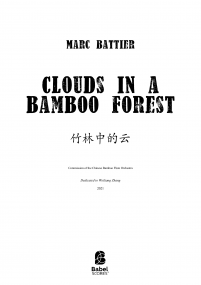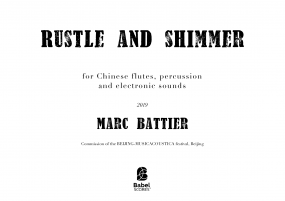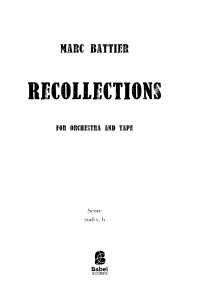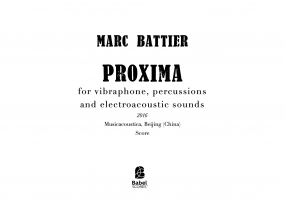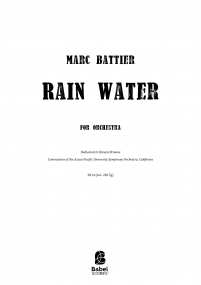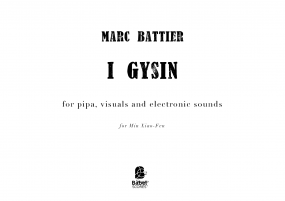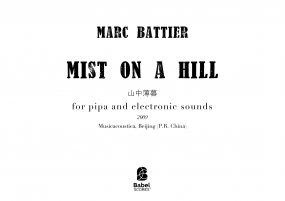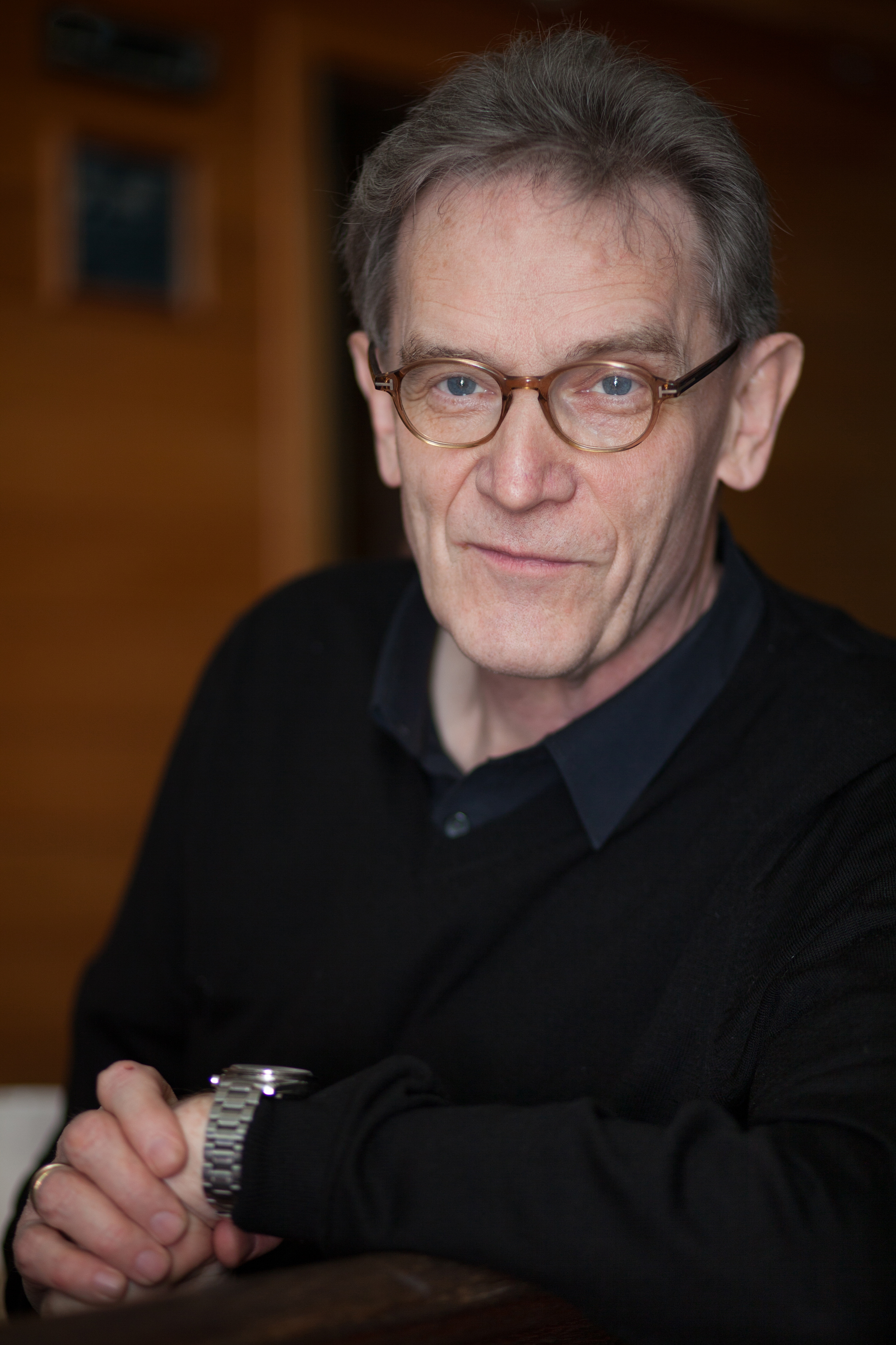
Marc Battier
Play all audio recordingsMarc Battier, compositeur et chercheur, s'est initié à l'informatique musicale grâce aux cours d'intelligence artificielle de Patrick Greussay, dès 1970. Il a ensuite suivi toutes les métamorphoses de l'informatique musicale, en liant des synthétiseurs VCS-3 à un micro-ordinateur en 1974 à Paris 8-Vincenne. Entre temps, il fut l'assistant de John Cage pour la présentation parisienne de Rozart Mix.
En 1978, avec Barry Truax, il organisa l'un des premiers workshop d'informatique musicale au Danemark, sous l'égide de l'Unesco, et fut invité la même année par Jean-Claude Risset à produire une œuvre, Géométrie d'hiver, entièrement composée avec MUSIC V. Il entra au GRM comme assistant à temps partiel de François Bayle pour l'assister pour sa première pièce sur l'ordinateur du GRM, composa à partir de 1979 pour le Synclavier, puis fut recruté par l'Ircam comme assistant musical et enseignant en informatique musicale. Il eut l'occasion de travailler, entre autres, avec Pierre Boulez, Karlheinz Stockhausen (Kathinka's Gesang), Steve Reich (essais pour My Name Is), Joji Yuasa (Nine Levels by Zeami).
Il fut l'un des cofondateurs de International Computer Music Association, wui supervise les conférences ICMC conferences, and a rejoint très tôt le comité éditorial du Computer Music Journal.
Après 22 ans passés à l'Ircam, dont deux ans comme professeur invité à l'Université de Californie à San Diego, il rejoint en 2002 Sorbonne Université comme professeur des universités en musicologie, sur le domaine des musiques électroacoustiques. Il est désormais professeur émérite.
Il est Master of Electroacoustic Music au DeTao Masters Academy (China) et membre du Global Center for Advanced Studies ("where sound meets thought").
Il est fondateur et directeur du réseau EMSAN (Electroacoustic Music Studies Asia Network) et, avec Leigh Landy, du réseau Electroacoustic Music Studies Network (EMS).
Il participe aux comités de rédaction de Organised Sound (Cambridge University Press) et le Malaysian Music Journal. Il a été membre des comités de rédaction de Computer Music Journal et Leonardo Music Journal (MIT Press), et honorary editor de Leonardo (MIT Press). Il a publié de nombreux articles dans des revues professionnelles et a dirigé plusieurs ouvrages en France et en Grande-Bretagne. Ses textes ont été publiés en France, Allemagne, Canada, Etats-Unis, Grande-Bretagne, Japon et Chine. Il prépare un ouvrage monographique sur l'esthétique des sons artificiels pour la collection Musicologie de la librairie philosophique Vrin.
Comme compositeur, il a reçu de nombreuse commandes : en France, commande d'Etat et du GRM ; Etats-Unis, Chine, Japon, Vietnam, et a été joué par l'Itinéraire, les solistes de l'Ensemble Intercontemporain, 2E2M, l'orchestre de la Sorbonne et par de nombreux ensembles étrangers. Il collabore régulièrement depuis 2009 au festival Beijing-Musicacoustica. Il a publié plusieurs CD de musique électroacoustique, dont l'un sur des poèmes sonores de Henri Chopin et un autre sur des tableaux de Roberto Matta.
S'il compose surout des œuvres électroacoustiques, avec ou sans instruments (souvents, des instruments de Chine ou du Japon), il aime aussi écrire des œuvres purement instrumentales, dans lesquelles il insère des textures issues de la pratique électroacoustique.
Il travaille actuellement sur une commande pour un orchestre chinois et un CD de musique électroacoustique sur des musical fragments de Ramuntcho Matta.
*** ENGLSIH
Marc Battier, composer and researcher, started to study computer music in 1970. He followed the classes of artificial intelligence and computer music taught by Patrick Greussay. He then became involved in the development of computer music, such as linking a couple of EMS VCS-3 analog synthesizers to one of the first micro-computers as early as 1974 at the Vincennes-Paris 8 university. Before that, he was briefly assistant to John Cage for the Paris performance of Rozart Mix.
In 1978, with Barry Truax, he organised of the first computer music workshop in Danemark under the auspices of Unesco, and that same year was invited by Jean-Claude Risset to compose Geometrie d'Hiver, computer-generated with MUSIC V. He entered GRM to help
François Bayle composer his first piece using of the GRM computer and software. In 1979, he was hired buy IRCAM as computer music teacher and musical assistant. There, he worked with Pierre Boulez, Karlheinz Stockhausen (Kathinka's Gesang), Steve Reich (experiments for My Name Is), Joji Yuasa (Nine Levels by Zeami) and others. In the meantime, he was co-founder of the International Computer Music Association, which supervises the ICMC conferences, and joined the editorial board of Computer Music Journal.
After 22 years at Ircam, with two yeas as invited professor at the University of California, San Diego, he joined in 2002 the faculty of Sorbonne University as full professor of musicology, specializing in contemporary music and electronic music. He is now emeritus professor.
He is Master of Electroacoustic Music at the DeTao Masters Academy (China) and membre of the Global Center for Advanced Studies ("where sound meets thought").
He is founder and director of EMSAN (Electroacoustic Music Studies Asia Network) and, with Leigh Landy, of the Electroacoustic Music Studies Network (EMS).
He is on the board the Organised Sound (Cambridge University Press) and the Malaysian Music Journal, and honorary editor of Leonardo (MIT Press). He has been on the boards of Computer Music Journal and Leonardo Music Journal. He has published many articles in professional journals and has edited several books, in France and in the UK. His texts have been published in France, China, Germany, Canada, Japan, United States and the UK. He is currently preparing a monograph of the aesthetics of artificial sounds for the Musicologies collection of Librairie Philosophique Vrin in Paris.
As composer, he has received many commissions: in France, State commission (Cxommande d'Etat) et from GRM; in the USA, China, Japan and Vietnam. His music has been played by Ensemble de l'Itineraire, 2E2M, The Sorbonne Orchestra and various soloists, and by several foreign ensembles. He regularly composed new pieces for Chinese instruments and electronics for the Beijing-Musicacoustica festival.
If he mostly composes electroacoustic pieces, with or without instruments (often, Chinese or Japanese instruments), he also likes to write orchestral pieces, in which he inserts textures derived from his electroacoustic practice.
He has published several CDs of electroacoustic music, including one of audiopoems from Henri Chopin and an other on paintings by Roberto Matta. He is currently working on a commission from a Chinese orchestra and a new CD of electroacoustic music on musical fragments from Ramuntcho Matta.
Instruments and Electronics
Toca Remix for marimba (2023)
Still Life With Sound (Nature morte avec son) (2022)
Rustle and Shimmer for Chinese flutes, percussion and electronic sounds (2019)
Proxima for vibraphone, percussions and electroacoustic sounds (2016)
Mist on a Hill for pipa and electroacoustic sounds (2009)
Ensemble (10 - 19 instruments)
Clouds in a Bamboo Forest Commission of the Chinese Bamboo Flute Orchestra (2021)
Soloist (Instrument or Voice) and Fixed Electronic Media
Proxima for vibraphone, percussions and electroacoustic sounds (2016)
I Gysin for Pipa, Electronics and Projections (2012)
Mist on a Hill for pipa and electroacoustic sounds (2009)
Proxima for vibraphone, percussions and electroacoustic sounds (2016)
Rain Water For orchestra (2014)
Recollections For Orchestra and Tape (2016)
Rustle and Shimmer for Chinese flutes, percussion and electronic sounds (2019)
Still Life With Sound (Nature morte avec son) (2022)
Toca Remix for marimba (2023)

